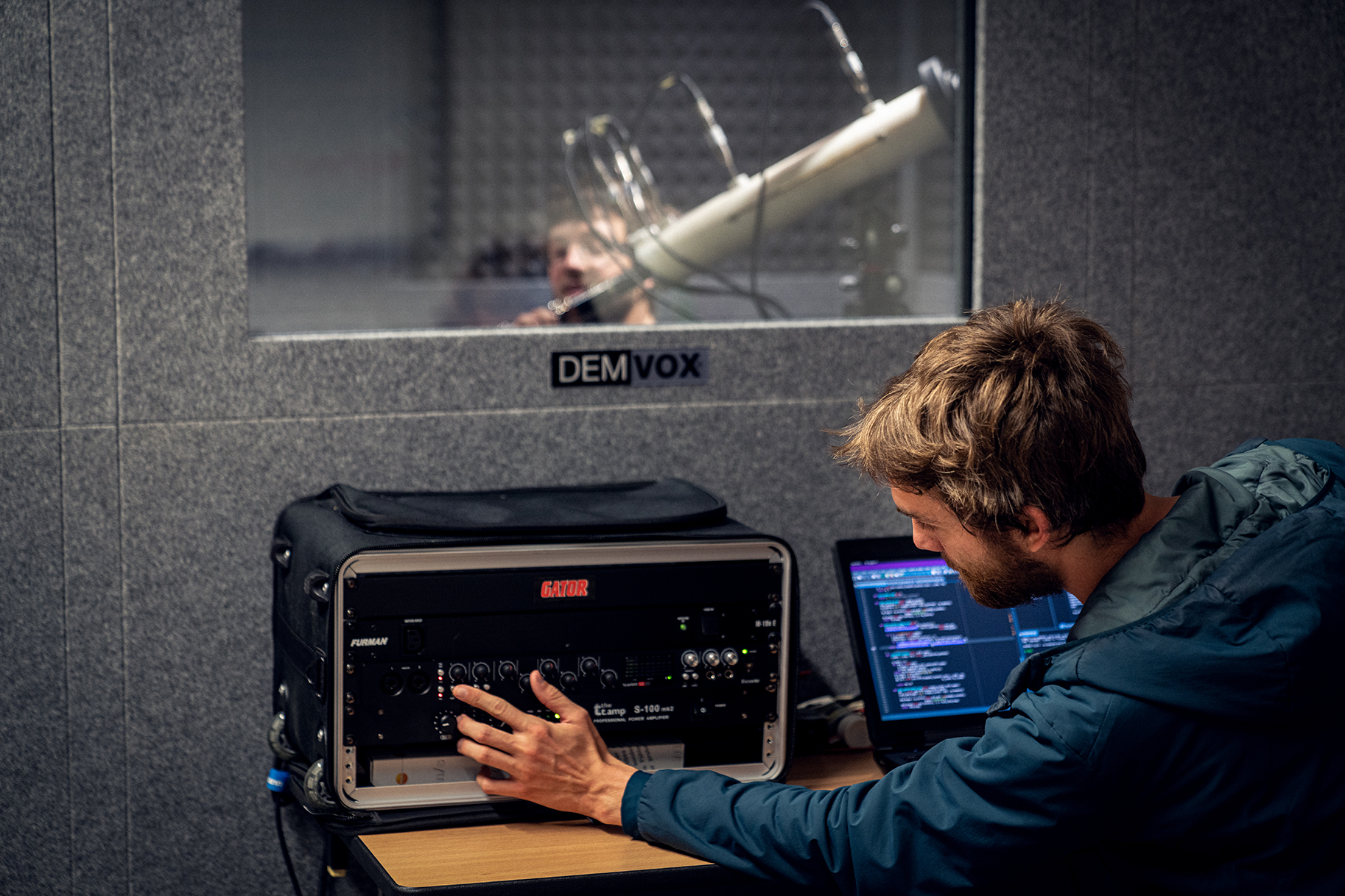Tools advancing science
Date:
Changed on 11/06/2021

In its Objectives and Performance Contract 2019-2023, Inria reiterates its aim to boost support for technological development. One aspect of this action focuses on the scientific tools used to carry out experiments. In fact, a computer researcher’s work does not only consist in writing programmes or designing algorithms. It often involves experimental procedures using all forms of ad hoc equipment.
The Inria Bordeaux – Sud-Ouest centre possesses a range of tools which reflect the diversity of the studies it carries out. For instance, it boasts a virtual reality platform, a soundproof room for modelling musical waves, or electrode headsets to study brain-machine interfaces.
How is this equipment chosen? Several principles come into play. Firstly, these tools all share a common denominator: they are related to digital science in one way or another. The next question is to determine whether it is more advantageous to acquire in-house equipment or to rely on partner infrastructures.
The in-house solution prevails when research is based on themes that are highly central to Inria’s activity and for which the Institute masters the underlying technology. Such is the case of the PlaFRIM cluster. Geared towards the optimisation of parallel computing, this server cluster constitutes the main digital experimentation tool for the Centre’s teams.
When additional needs emerge, pooling agreements provide access to external resources. With regard to computing, this includes machines owned by the CEA [Atomic Energy Commission], the CNRS [French National Scientific Research Centre] and the CINES [National Computing Centre for Higher Education], in addition to other European structures.
A certain number of these tailor-made tools incorporate research results. They constitute prototypes which validate concepts, in addition to opening up new exploratory fields. For example, a world exclusive digitalisation bench for textiles, which can even reproduce the varied reflectance of the weave. This tool took five years to develop.
Finally, when the theme becomes trans-disciplinary and expands beyond the core of the Institute’s activity, the teams turn to tools held by their partners. This is notably the case in the health field, with the Institute for Neurodegenerative Diseases, IHU Liryc [Electrophysiology and Heart Modelling Institute] and the Institut Bergonié [Cancer Institute].
Technological support is provided by Inria’s Experimentation and Development Department (SED). Hervé Mathieu, from the Bordeaux-based department, explains:
There are ten engineers in the Bordeaux – Sud-Ouest SED. We work alongside researchers. We contribute to the development of experimental protocols. We are often quoted as co-authors for scientific publications.